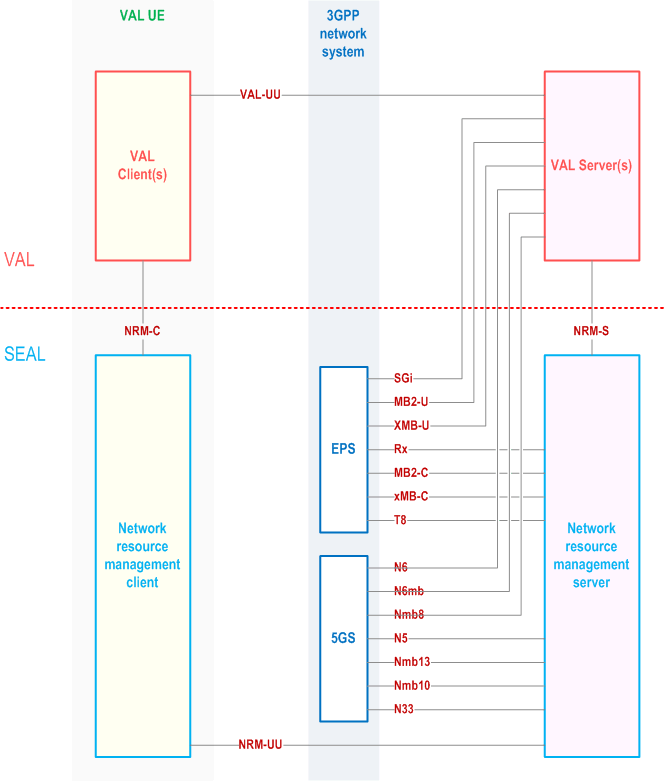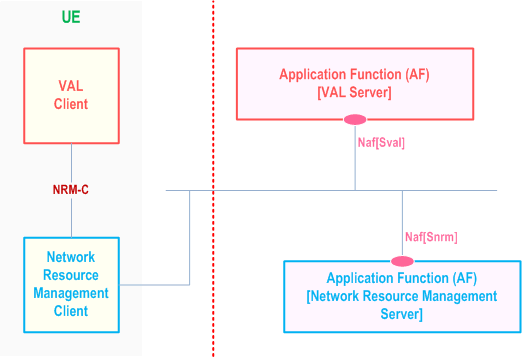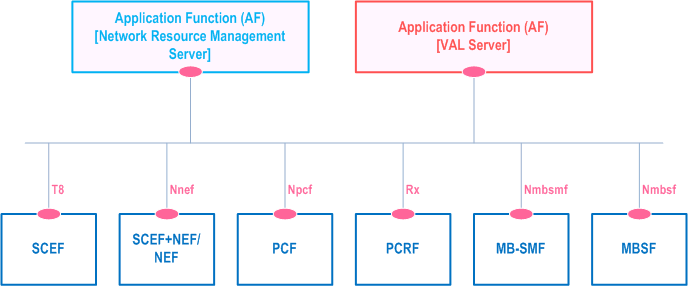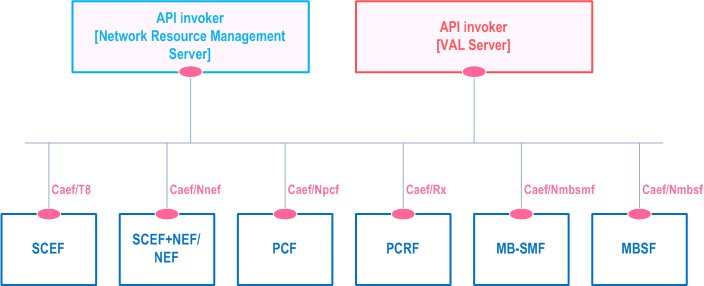Content for TS 23.434 Word version: 19.3.0
0…
4…
5
6…
6.4…
6.5…
6.5.3…
7…
8…
8.2.2…
9…
9.3…
9.3.2.21…
9.3.3…
9.3.6…
9.3.11…
9.3.13…
9.3.14…
9.4…
9.4.6…
9.5…
10…
10.3…
10.3.2.22…
10.3.3…
10.3.7…
10.3.10…
10.4…
11…
11.3…
11.3.3…
11.4…
12…
12.3…
13…
14…
14.2.2.2…
14.3…
14.3.2.20…
14.3.2.40…
14.3.3…
14.3.3.3…
14.3.4…
14.3.4.6
14.3.4.7…
14.3.4A…
14.3.4A.3…
14.3.4A.4…
14.3.4A.6…
14.3.4A.8…
14.3.4A.9…
14.3.4A.10…
14.3.5…
14.3.6…
14.3.9…
14.3.12…
14.4…
15…
16…
17…
18…
A
B…
14 Network resource management
14.1 General
14.2 Functional model for network resource management
14.2.1 General
14.2.2 On-network functional model description
14.2.2.1 Generic on-network functional model for network resource management
...
...
14 Network resource management p. 174
14.1 General p. 174
The network resource management is a SEAL service that offers the network resource management (e.g. unicast and multicast network resources) and monitoring related capabilities to one or more vertical applications.
14.2 Functional model for network resource management p. 174
14.2.1 General p. 174
The functional model for the network resource management is based on the generic functional model specified in clause 6. It is organized into functional entities to describe a functional architecture which addresses the support for network resource management aspects for vertical applications. The on-network and off-network functional model is specified in this clause.
14.2.2 On-network functional model description p. 174
14.2.2.1 Generic on-network functional model for network resource management |R17| p. 174
Figure 14.2.2.1-1 illustrates the generic on-network functional model for network resource management.

The network resource management client communicates with the network resource management server over the NRM-UU reference point. The network resource management client provides the support for network resource management functions to the VAL client(s) over NRM-C reference point. The VAL server(s) communicate with the network resource management server over the NRM-S reference point.
The network resource management server obtains and controls the multicast/broadcast resource from the underlaying 3GPP network system by communicating with the BM-SC via MB2-C and xMB-C reference points towards LTE eMBMS and with the 5G MBS control plane functions via Nmb13, Nmb10 or N33 towards the 5GS. The network resource management server communicates with the PCRF via Rx reference point or communicates with the PCF via N5 reference point to control the unicast resources from the underlying 3GPP network system. The network resource management server communicates with the SCEF via T8 reference point or communicates with the NEF via N33 reference point to perform event monitoring procedures from the underlying 3GPP network system. The network resource management server interacts with NEF via N33 to obtain QoS monitoring information from the 5GS.
Figure 14.2.2.1-2 exhibits the service-based interfaces for providing and consuming group management services. The network resource management server could provide service to VAL server and network resource management client through interface Snrm.

Figure 14.2.2.1-3 illustrates the service-based representation for utilization of the 5GS network services based on the 5GS SBA specified in TS 23.501.

Figure 14.2.2.1-4 illustrates the service-based representation for utilization of the Core Network northbound APIs via CAPIF.

The Network resource management server and VAL server act as authorized API invoker to consume services from the Core Network northbound API entities like NEF which act as API Exposing Function as specified in TS 23.222.